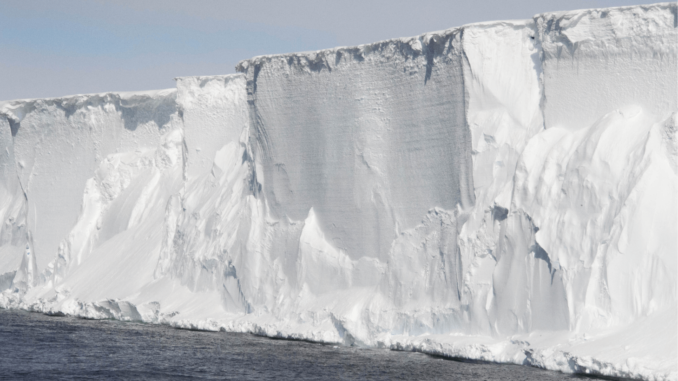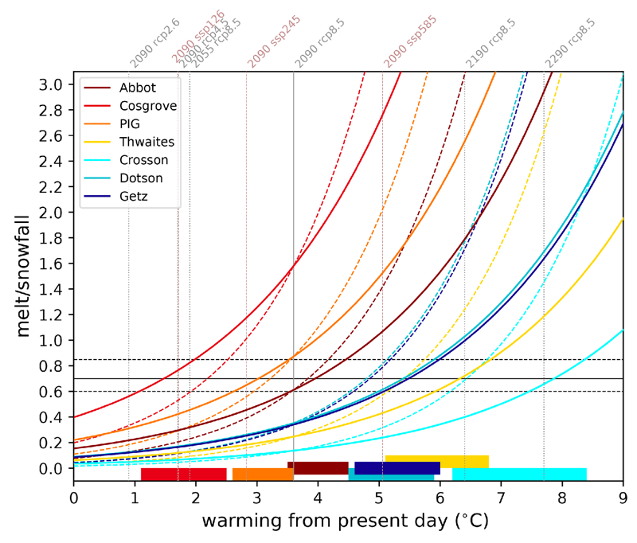
PROTECT paper #6 has been released! Future ice-shelf surface melt (and potential for hydrofracturing) and grounded-ice-sheet surface mass balance (and impact on sea level) in the Amundsen sector of West Antarctica, under the RCP8.5 scenario.
Here are the main findings:
- Ice-shelf surface melt rates increase by an order of magnitude in the 21st century, inducing net production of surface liquid water over eastern ice shelves (PIG to Abbot) but not over western ice shelves (Getz to Thwaites) where meltwater is buried in the snow and refreezes

- The net production of surface liquid water is used it as an indicator of potential ice-shelf collapse. Liquid water in excess can indeed form ponds or flow into crevasses (potentially inducing hydrofracturing) or into the ocean (potentially inducing ice-shelf bending)
- A simple emulation of the model projections to other scenarios suggests that from Getz to Thwaites, ice-shelf collapse is unlikely to be triggered by hydrofracturing before the 22nd century under RCP8.5. Such collapse is unlikely for all ice shelves before 2100 under RCP2.6

- Besides, the projected increase in surface mass balance (SMB) over the grounded basins of the Amundsen sector is 7.4 to 8.9% per degree of near surface warming, which is equivalent to a reduction of 0.33 mm/yr of the global mean sea level changing rate

- The projections are based on the MAR model (https://www.mar.cnrs.fr) at 10km and CMIP5 multi-model mean seasonal changes. This method has the advantage to partly remove biases found in CMIP5 models. A perfect-model approach is used to evaluate the projection method
- Simulations in open access on https://doi.org/10.5281/zenodo.4310797 and http://doi.org/10.5281/zenodo.4308510.
